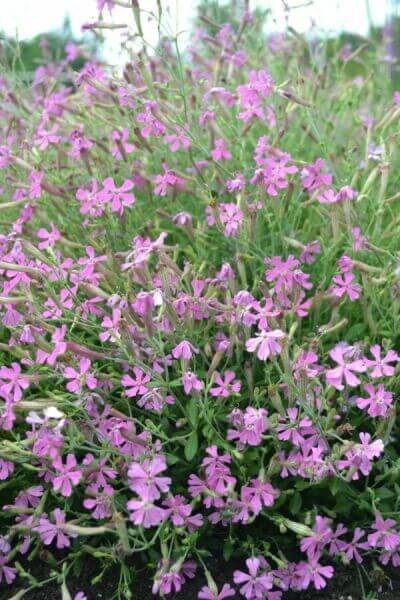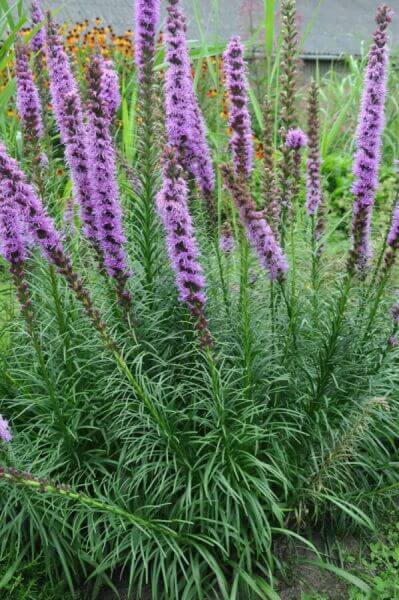Hedge Plants For Privacy Screens
Hedge Plants For Privacy Screens
Blog Article
Hedging Plants For Autumn Color
Improve your garden's appeal with lush hedge varieties such as Yew (Taxus), Thuja, Laurel, Photinia, and Bamboo, commemorated for their structural integrity and ecological benefits.
Yew and Thuja offer evergreen protection and winter strength, while Laurel offers fast development and broad, fragrant leaves.
Photinia adds seasonal appeal with its lively red foliage, and Bamboo lends a low-maintenance, peaceful atmosphere.
These hedges improve air quality, decrease sound, and create tranquil, private areas.
Appropriate planting, spacing, and maintenance make sure vigorous development and environmental harmony.
Check out how these rich varieties can raise your garden's beauty and wellness.
Key Takeaways
Transform Your Garden With Lush Hedge Varieties
- Select Yew for its thick, evergreen development and unparalleled longevity.
- Select Laurel for its quick development and broad leaves, ensuring quick privacy.
- Select Photinia for its vibrant seasonal foliage, which turns a striking dark red.
- Utilize Bamboo for a low-maintenance, winter-hardy hedge with visual appeal.
- Space plants 2-3 per meter and prune frequently for optimal growth and health.
Popular Hedge Plants
When transforming a garden with rich hedge ranges, it's vital to think about popular hedge plants such as Yew, Thuja, Laurel, and Photinia due to their special characteristics and benefits.
Yew (Taxus) is highly esteemed for its longevity and dense, green development, making it a prime option for sustaining landscapes.
Thuja is kept in mind for its evergreen foliage and robust winter season strength.
Photinia includes seasonal vibrancy with red leaves that darken gradually, developing vibrant visual appeal.
Laurel provides fast growth and fragrant, broad leaves, perfect for fast personal privacy.
Furthermore, Bamboo is an exceptional option for ambiance, offering a low-maintenance, winter-hardy option that boosts the garden's visual with its classy, swaying walking canes.
These choices accommodate a variety of horticultural requirements and choices.
Benefits of Garden Hedges
Garden hedges offer a wide range of benefits, making them a valuable addition to any landscape. These natural barriers are cost-efficient to execute and offer significant wind defense, improving air circulation and adding to noise decrease. The thick foliage of hedges like Thuja and Beech ensures personal privacy by obstructing visibility, producing a peaceful and remote environment.
Hedges likewise play an essential function in microclimate guideline, offering a stable environment that promotes plant growth and lessens temperature variations. Their elaborate leaf structures filter toxins, improving air quality and adding to a healthier garden community.
Moreover, hedges master sound reduction, soaking up and deflecting sound waves to lower ambient sound levels. This double functionality of offering both visual and acoustic personal privacy boosts the overall harmony and aesthetic appeal of any garden.
Planting and Maintenance Tips
For an effective hedge, careful preparation of the planting area is important. Make sure the soil has proper pH and drain to support strong root advancement.
Space the plants appropriately for the selected types. Water the hedge frequently during its initial development stage, changing as needed with seasonal changes.
Execute a organized pest control and disease prevention technique, utilizing natural or chemical treatments when necessary. Routinely examine for aphids, mites, and fungal infections.
Apply mulch to keep wetness and reduce weeds. Seasonal pruning promotes thick growth and air circulation, important for plant health.
Following these standards will assist you cultivate a lively, properly maintained hedge that enhances the beauty of your garden.
Spacing and Trimming Guidelines
Spacing and Trimming Guidelines
Proper spacing and trimming are essential for cultivating healthy, visually appealing hedges. Sufficient spacing guarantees each plant receives adequate nutrients, light, and airflow.
Follow these standards for optimum hedge upkeep:
- Spacing: Position hedge plants 2-3 plants per meter to motivate robust growth.
- Pruning Methods: Regular pruning is important for maintaining desired hedge height and shape. Trim brand-new development in summer season and cut down older wood throughout winter.
- Seasonal Care: Adjust trimming techniques and schedules according to seasonal requirements to guarantee plant health.
- Hedge Height: Routinely screen and cut to keep the preferred hedge height and accomplish uniform visual appeals.
Complying with these actions will ensure your hedge flourishes, enhancing both the appeal and performance of your garden.
Selecting the Right Hedge
Choosing the Right Hedge
Selecting the proper hedge involves evaluating aspects such as mature height, foliage density, and environmental strength. Successful hedge plant choice needs understanding each types' growth attributes and site-specific versatility.
For example, Yew (Taxus) provides excellent durability and dense development, while Thuja is noteworthy for its winter season durability. Additionally, thinking about upkeep requirements is vital; fast-growing species like Laurel or Privet need regular cutting, whereas low-maintenance choices like Bamboo or Ivy may be more effective for those seeking very little upkeep.
Ecological factors such as soil type, light accessibility, and moisture conditions must likewise guide the choice process. This cautious technique ensures the selected hedges will thrive, offering both visual and functional advantages to the garden landscape.
Delivery and Planting Recommendations
To ensure your hedge plants flourish, they must be provided by specialized couriers and planted immediately upon arrival.
Follow these necessary steps for successful planting:
- Soil Preparation: Enhance the soil with natural matter to enhance drainage and nutrient content.
- Planting Depth: Produce a trench two times the width and equivalent to the depth of the root ball.
- Watering Techniques: Water thoroughly after planting, keeping the soil consistently damp however not filled.
- Mulching: Use a layer of mulch to retain moisture and suppress weeds.
Client Assistance and Service
Offered the vital role of timely assistance in horticultural pursuits, our customer support team is offered 6 days a week through telephone, e-mail, and social networks to use skilled suggestions and promptly address any concerns. Their dedication to quick response times ensures customer complete satisfaction by dealing with inquiries associated with plant health, ideal planting techniques, and maintenance schedules.

This detailed assistance system, enhanced by a stellar 9.3/ 10 customer rating, highlights our dedication to boosting the gardening experience for every single customer.
Regularly Asked Concerns
How Long Does It Consider Hedge Plants to Develop?
Hedge plants generally require one to three years to become totally developed, with the specific period differing by types and growing conditions.
Reliable care throughout this critical period is essential for robust growth. Constant watering, alert weed control, and proper fertilizer application are essential in promoting strong root advancement.
For example, fast-growing species like Laurel may develop more rapidly, while slower-growing ranges such as Yew might take longer. Diligent maintenance speeds up the facility process, resulting in thick and healthy hedges.
What Are the very best Hedge Plants for Personal Privacy?
The question of the very best hedge plants for personal privacy includes assessing evergreen and deciduous options.
Evergreen hedges like Thuja, Laurel, and Cypress supply year-round protection, guaranteeing continuous personal privacy.
On the other hand, deciduous hedges such as Beech offer seasonal personal privacy, shedding leaves in chillier months.
Key upkeep ideas for privacy hedges consist of routine trimming, fertilizing in spring, and correct spacing-- usually 2 to 3 plants per meter.
Additionally, constant watering and persistent weed elimination are important for promoting healthy, dense growth.
Can Hedge Plants Bring In Wildlife to My Garden?
Yes, hedge plants can draw in wildlife to your garden by supplying vital benefits like shelter, food, and nesting websites, thus boosting regional biodiversity. Yew, holly, and laurel are excellent for attracting birds, while ivy supports a range of insects.
Nevertheless, it is necessary to note that there are some downsides, such as increased maintenance to handle bugs and routine upkeep. Thoroughly selecting and preserving hedge varieties can help stabilize these drawbacks and advantages, ultimately promoting a lively and sustainable community in your garden.
Exist Any Blooming Hedge Plants Available?
Yes, there are flowering hedge plants offered that can improve the appeal of your garden.
For example, Elaeagnus, likewise referred to as Olive Willow, produces fragrant white flowers in the fall, adding a touch of sophistication.
Photinia, another popular option, showcases vibrant red leaves that grow into a rich green, developing a vibrant visual effect throughout the seasons.
To guarantee these plants prosper, it's necessary to practice appropriate pruning strategies and seasonal upkeep, such as cutting new growth in the summertime and cutting down in the winter season.
These procedures will assist keep the health and visual appeal of your blooming hedges.
How Do I Prevent Pests in My Hedge Plants?
To prevent pests in hedge plants, employ natural pest control methods and keep correct website hedge care. Present beneficial insects like ladybugs, which prey on harmful pests, to create a balanced ecosystem.
Regularly inspect your hedges for signs of invasion and promptly remove any afflicted parts to avoid the spread. Make sure the health of your hedges by using balanced fertilizers and offering adequate water.
Make use of mulching to keep soil moisture and appropriate spacing to reduce plant stress and promote robust development. These practices jointly help in reducing pest concerns and keeping a healthy hedge.
Conclusion
In essence, selecting the right hedge varieties such as Yew, Thuja, and Laurel can change any garden into a relaxing haven. These plants supply year-round plant, improve aesthetic appeal, and offer useful advantages like noise decrease and wind security.
Proper planting strategies, accurate spacing, constant watering, and seasonal cutting are important for optimal development.
Trusted delivery services and expert consumer support make sure a seamless experience from purchase to planting, making it easier than ever to elevate your outside area.
Garden hedges offer a plethora of benefits, making them an important addition to any landscape. These natural barriers are economical to implement and offer considerable wind defense, enhancing air blood circulation and contributing to noise decrease. The dense foliage of hedges like Thuja and Beech makes sure privacy by blocking visibility, producing a remote and serene environment.

Pruning Strategies: Routine pruning is important for maintaining wanted hedge height and shape. Cut new development in summer season and cut back older wood during winter season.
Report this page